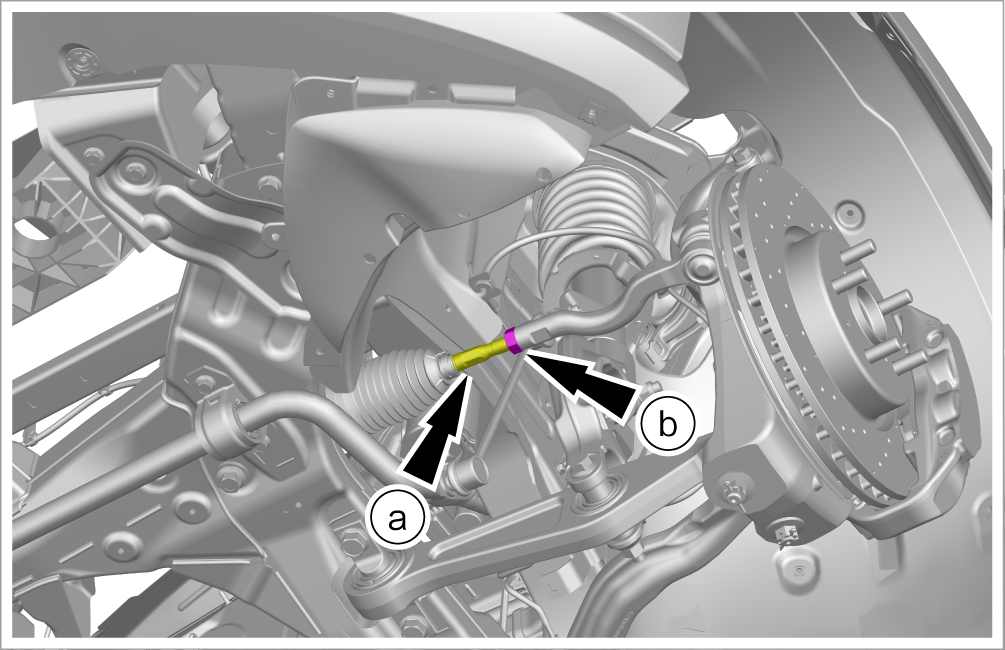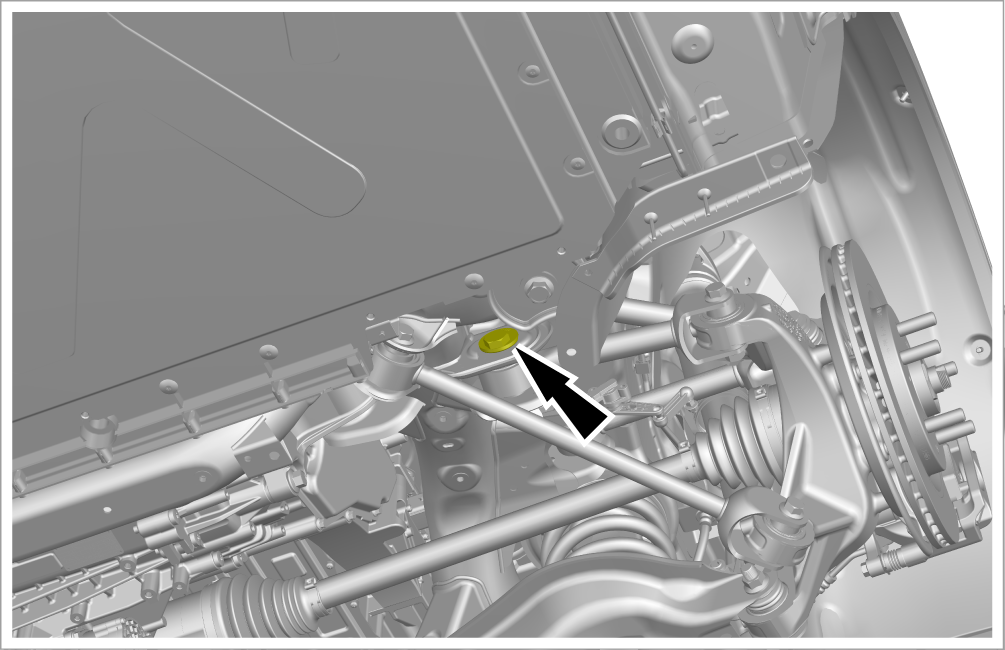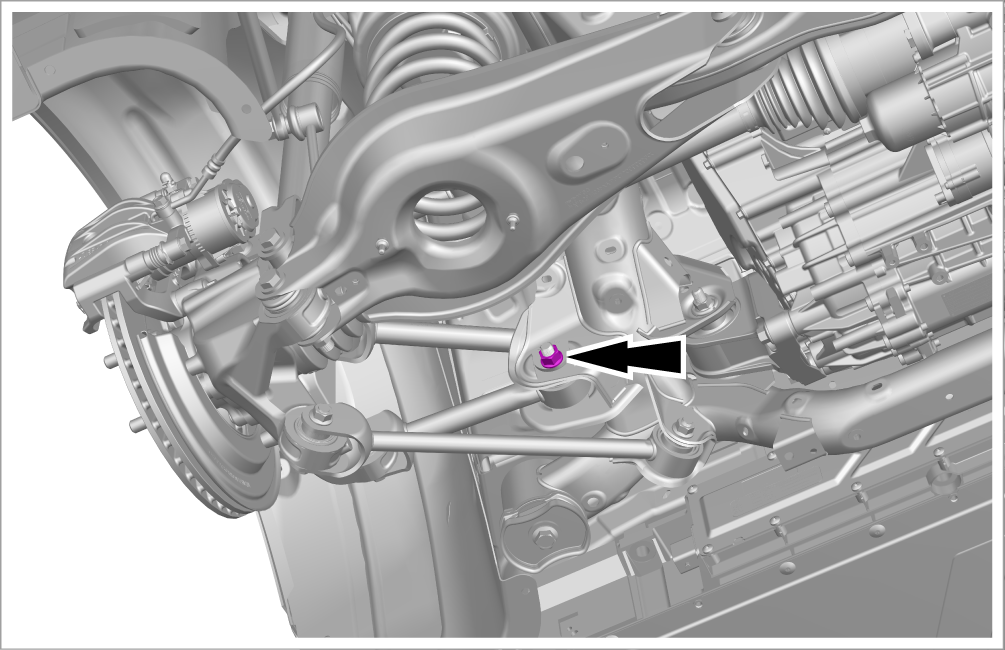Four-wheel alignment
Adjustment
-
If the caster angle and inclination angle of the front wheel kingpin are not within the specified range, check suspension components for bending or damage. If the suspension components are bent or damaged, replace the damaged components. Do not try to repair them by tapping or other methods.
-
If camber angles of front and rear wheels are not within the specified range, check suspension components for bending or damage. If the suspension components are bent or damaged, replace the damaged components. Do not try to repair them by tapping or other methods.
-
If the front wheel toe-in is correct, but the steering angle is not within the specified range or the left inner steering angle is different from the right one, check suspension components for bending or damage. If the suspension components are bent or damaged, replace the damaged components. Do not try to repair them by tapping or other methods.
-
The suspension device can be used to adjust the front wheel toe-in and rear wheel toe-in.
-
Inspection before four-wheel alignment:
-
Release the parking brake to avoid incorrect measurement.
-
Make sure that the suspension device is not changed.
-
Make sure that the 4 tires are of the same specification, and that the tire pressure is within the specified range.
-
Make sure that there are no people or extra loads in the vehicle.
-
Check whether each fixing point of suspension is loose and deformed, and check the clearance of suspension ball heads to ensure it is not too large.
-
Check for wheel wobble.
-
Check to confirm that both sides of the vehicle are level with each other.
-
Carry out a dynamic balance test on the wheel. Install the wheel back on the vehicle after the test.
-
Make the wheels bounce up and down several times to stabilize the suspension.
-
The test bench is in normal condition.
-
Adjust the rear wheels first and then the front wheels.
-
-
Test:
-
Check the wheel alignment according to the operating instructions of the four-wheel aligner.
-
-
Adjust the front wheel total toe-in.
ReminderThe toe-in adjustment method of the left and right front wheels are the same way.-
Fix the toe-in adjusting sleeve with a wrench.
-
Loosen the lock nut.
-
Rotate the toe-in adjusting sleeve until the toe-in is correct.
CautionBy adjusting the left and right wheels to the same extent in the opposite direction, you can get the correct toe-in and keep the steering wheel straight.-
Toe-in angle of front wheel: 0.05°±0.08°
-
Front wheel total toe-in: 0.1°±0.16°
-
-
After adjustment, fix the toe-in adjusting sleeve and tighten the lock nut. Make sure that the toe-in setting does not change.
-
Perform steering angle learning and zeroing according to the prompt on the VDS.

-
-
Adjustment of rear wheel camber angle.
ReminderThe chamber adjustment method of the left and right rear wheels the same way.-
Fix the eccentric bolt with a tool.

-
Loosen the lock nut.
-
Tightening torque: 140 N•m

-
-
Rotate the eccentric bolt for adjusting the rear wheel camber angle until the camber angle is correct.
Caution-
The connecting point of the camber eccentric bolt is for two-time use, after removal, new nuts shall be installed.
-
Bolts and gaskets should be replaced according to the actual condition. In case of rusting, replacement is recommended.
-
Make sure the gasket and eccentric bolt gasket are fitted in the limit slot.
-
Rear wheel camber: -1±0.75°
-
-
After adjustment, fix the eccentric bolt and tighten the lock nut.
-